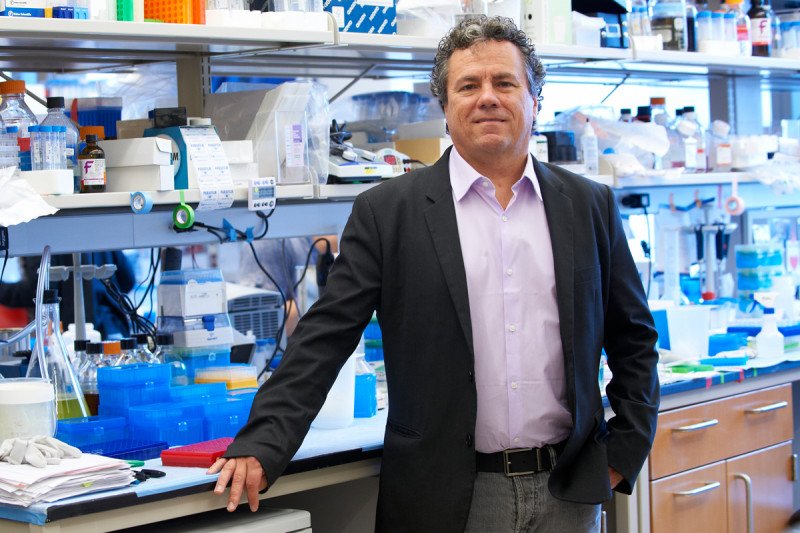
Increasingly, scientists are findings ways to shortcut the search for new cancer therapies. In a recent effort focused on hepatocellular carcinoma (HCC), a common and often aggressive form of liver cancer, a team of Memorial Sloan Kettering researchers discovered a way to thwart the cancer in mice, opening new possibilities for developing targeted drugs against it.
Rather than focusing only on genes known to drive this cancer — for which no effective drugs may exist — the researchers targeted other genes in tumor cells for which drugs are already available or being developed. The study was led by biologist Scott Lowe, Chair of the Cancer Biology and Genetics Program and the Geoffrey Beene Cancer Research Center, and reported in the journal Genes & Development in August.
No Obvious Drug Targets
According to some estimates, HCC is the third leading cause of cancer-related death worldwide, and its incidence is on the rise. In studying the genome of HCC tumors derived from patients, scientists at MSK and elsewhere have identified a number of gene changes that are responsible for driving the disease, including mutations in a gene called Myc.
But to their disappointment, none of these mutations are “druggable” — in other words, patients whose tumors carry these alterations can’t be offered a drug or a clinical trial that would potentially benefit them.
In many other cancers, such as lung cancer and melanoma, molecular characterization has led to the discovery of mutations that make tumor cells vulnerable to specific targeted therapies. “But HCC remains a disease for which no effective drugs exist,” Dr. Lowe says. “Even though we’ve learned about a number of things that are important in keeping these cancers alive, genomic studies haven’t led to any obvious ways to treat them.”
Searching by RNA Interference
Rather than looking for changes in the DNA sequence of HCC tumors, Dr. Lowe and his co-workers set out to try a different approach. His lab developed methods to shut down the activity of almost every gene in a cell one by one, to determine what the gene’s biological function is or whether the cell needs it to grow or survive. These methods, which are based on a technology called RNA interference (RNAi), also make it possible to screen cancer cells for potential drug targets.
“The problem with RNAi screens is they are very challenging and time consuming,” Dr. Lowe says, “and since HCC is a lethal cancer, we just can’t spend a decade looking for a drug.”
To speed the process, the researchers chose to confine the search to genes for which drugs already existed or were being developed. Following this approach, they identified a number of genes whose activity could be therapeutically stifled to kill HCC cells.
A Doorway to Treating Certain Tumors
The investigators found that targeting one of the genes, which codes for an enzyme called CDK9, might be particularly effective in a subset of patients whose tumors carry mutations in the Myc gene. “Our results demonstrate how CDK9 and Myc ‘talk’ to each other to drive tumor progression,” Dr. Lowe explains, “and that inhibiting CDK9 with a type of drug called a kinase inhibitor could be an effective way to control that progression.”
The CDK9-inhibitors that currently exist are not good enough to be tested in patients, however. “The compounds are not very specific and there’s a risk they could interfere with other proteins whose molecular structure is similar to that of CDK9,” he says. “This could lead to adverse side effects.”
Yet, he adds, these drug molecules do provide a starting point for chemists to develop new, more-precise compounds that potentially could be used to target HCC cells without damaging normal cells.



